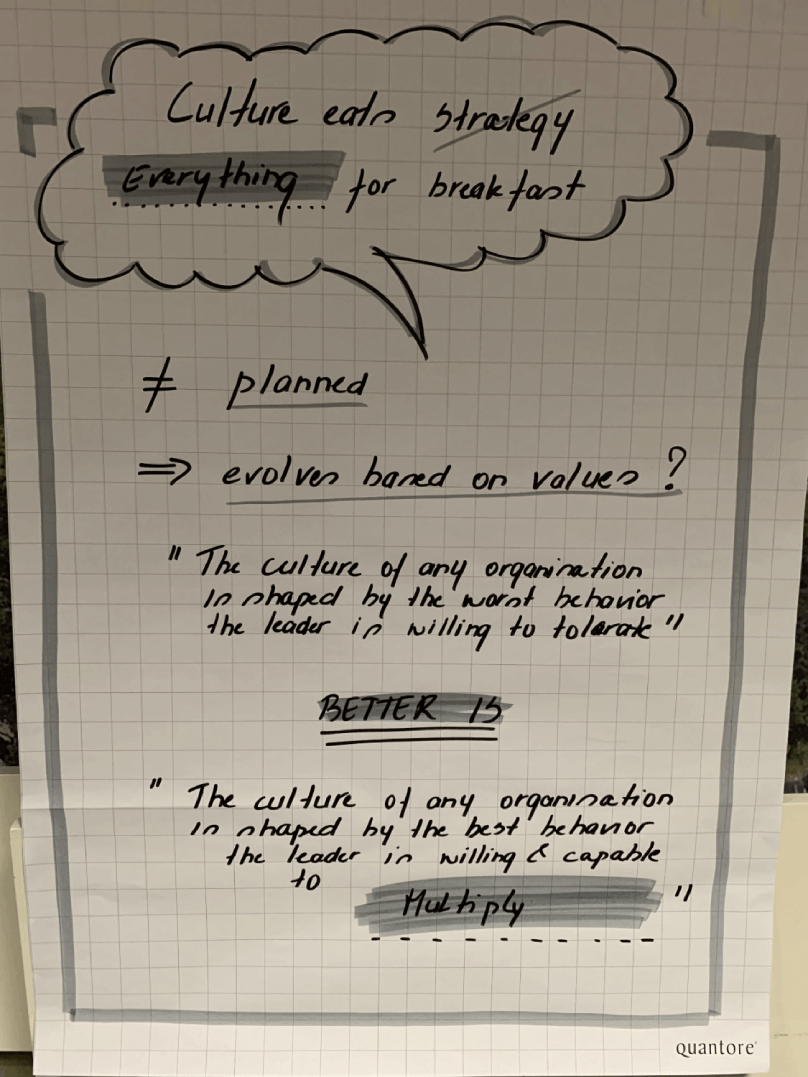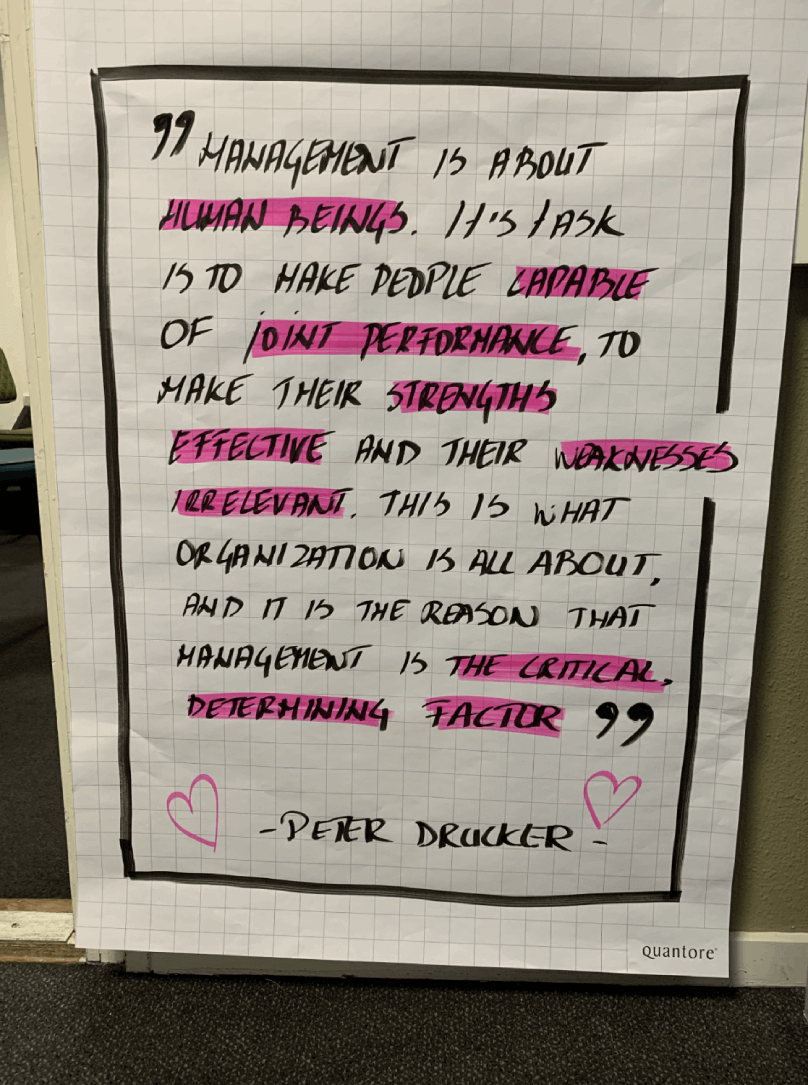“Culture eats strategy for breakfast.”
This is a quote from Steven Covey which is a subject on almost everyone’s priority list who wants to (help) create / facilitate agile adaptive organizations, teams and professionals. Coping with complex and fast changing environments requires highly agile and adaptive teams and professionals.
Agility and adaptability have different meanings for different companies, different teams and different people. What I see as agile and adaptive might not be seen as such by someone else. So what do I, we as a team, we as a department or we as a company define as agile and adaptive?
To answer this question we have to discuss values. How do we want to work together, what behavior do we feel is important to us and what are our core values. Values are the fundament or foundation upon which culture is built. Management 3.0 has generated a list of values which you can download here.
- “Culture is not planned and does not happen, culture evolves based on values.”
- “An agile and adaptive culture is shaped by the best behavior the leader / manager / or people are willing to multiply.”
Management 3.0 has slightly changed Steven Covey’s quote into: “Culture eats
strategyeverything for breakfast.”
When hiring for new people, the main idea behind culture is to hire people for a cultural fit first and secondly hire people for the skills you need.
When helping my customers to hire new people, I always apply the STAR method to get a quick “feeling” about 2 things: 1. will someone fit in the culture we are working in (personal fit) and 2. what are the “technical” skills we are looking for which will help us to achieve our team’s and company’s objectives and key results.
The STAR method is an easy way of structuring interviews with candidates. You can download a couple of STAR example questions you can use during interviews and can read more about this method here.
Now that I am using this method for many years, I have experienced and learned the following:
- Is the profile text for recruiting good candidates in line with words that express the culture of a team / company? If not, you might get the wrong people to apply for the job.
- Are you clear on what type of person you are looking for in terms of cultural fit? It does not make sense if you are looking for a “striker” but actually need a “keeper”.
- Raising “powerful questions” during interviews will help you better understand “the why” of candidates. If the candidates “why” does not fit into your culture or team setup, you might end up frustrating people who have already been working with each other for some time to create an agile / adaptive culture based on the values you jointly have agreed upon AND at the same time you might also end up with a frustrated candidate because of the cultural mismatch.
- The cost of a “bad” hire or mismatch are huge just Google “the cost of a bad hire” and find out yourself.
- If a manager hires people without consulting team members or letting team members do the interviews themselves, a team might end up being frustrated AND the newly hired person might also get frustrated.
“The best teams win from the best players.”
My experience shows that no one ever disliked the STAR method. I do had people who struggled to apply the method, this had everything to do with insufficient practice and experience.
In one of my assignments I managed to recruit 9 people in a couple of months. I held interviews always together with a colleague so that there were 2 people who could reflect on each others observations about a candidate. What I organized is that every candidate always had 2 interviews in 1,5 hours. 45 minutes with couple 1 and 45 minutes with couple 2. Both couples (4 people) applied the STAR method after they jointly first prepared what technical and personal things they would like to STAR question a candidate about to quickly get a “feeling” about someones personality and technical skills.
Applying the STAR method as a couple when interviewing candidates extremely helps to understand why people apply, whether they are motivated for the job itself and the company or desperately need a job, any job (which itself is not a bad thing, but the motivation of someone might be different). Also working with 2 couples for 1 candidate helps to quickly conclude. Speedy follow up when people apply for a job, especially in a market situation where there are more vacancies than candidates, is extremely important. But this does not say that you should hire everyone that applies for a job. That is why the STAR method is important and very helpful.
Because the method is that easy, I never encountered any resistance when using the STAR method or explaining others why and how to use the method. I do had candidates who did not agree on the outcome of an interview, but that is something else.
Good luck practicing with the STAR method and have some fun interviewing!
Andy Joghi – Management 3.0 Facilitator





